Last Updated on March 30, 2023
Are you shopping for a new mattress for your child? If so, you’ve considered an organic mattress.
Small children typically spend as much as one-third of their time sleeping.
A healthy sleeping environment is essential for your child’s development and well-being. It’s important for a child to have a comfortable bed, but it’s also important for that bed to be safe!
Most ordinary mattresses contain polyurethane foam, which is flammable. This results in the presence of flame-retardant synthetic chemicals.
Non-organic mattresses also contain carcinogens and nasty chemicals that cause skin and respiratory inflammation.
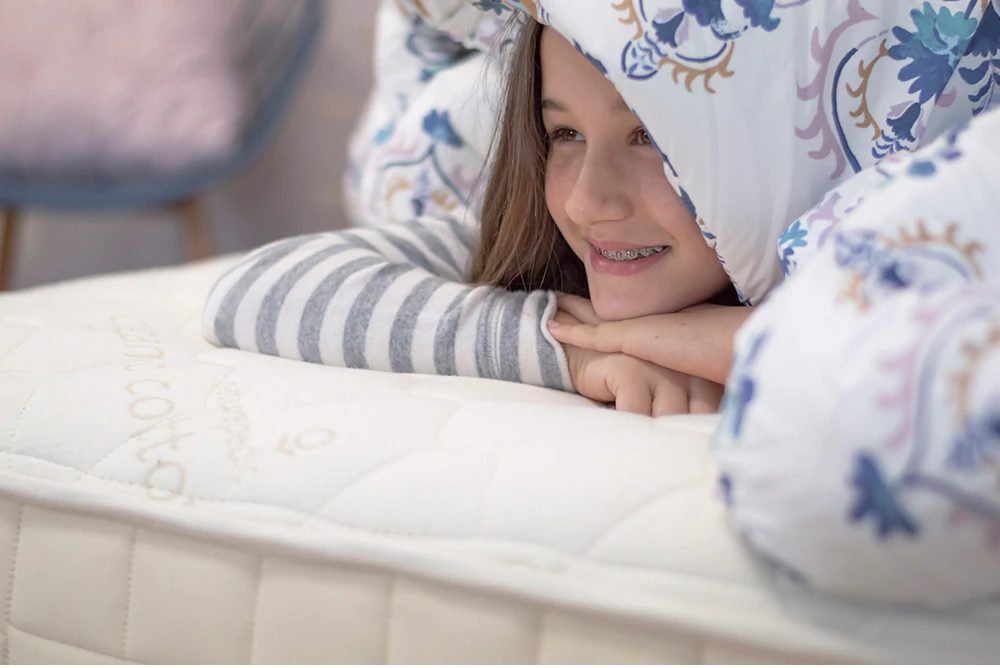
Sleeping on an organic mattress helps kids sleep through the night. Their internal systems are still developing, so children’s bodies need plenty of time to detoxify.
Their organs and digestive systems can’t rid the body of toxins and wastes as efficiently as teenagers or adults can.
As a parent, you want to avoid toxins in and on your child’s mattress. So, choose a non-toxic organic mattress. This will ensure quality sleep for your child.
Our Organic Mattress Recommendation
Organic mattresses definitely have their benefits. And naturally, every parent wants to protect their child. But with so many options, where do you start?
There are hundreds of mattress options available. So let’s simplify the process here.
We’ve tested a lot of mattresses over the years. Some good, some bad. Saatva’s line of children’s mattresses has always been great!
So, depending on the age of your child, we recommend one of the two options below:
For Children Ages NB to 3 Years Old
For newborns to 3-year-olds, we recommend the Saatva Crib Mattress.
This organic crib mattress is 100% hypoallergenic organic cotton and wool, with a latex foam layer. It comes with a 45-day free return policy, free shipping, and a lifetime warranty.
They measure 28″ x 52″.
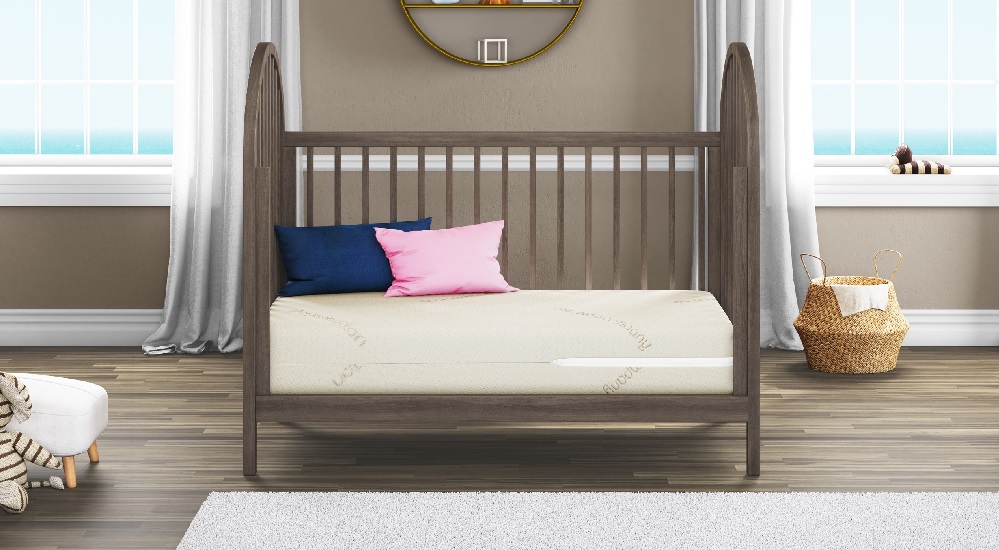
This mattress lowers the risk of suffocation, and it’s Greenguard Gold Certified. So, it’s certified to be free of harmful emissions, formaldehyde, and VOCs.
It’s also 100% breathable when used on cribs and toddler beds.
The primary selling point of the Saatva crib mattress is that it is actually dual-sided. One layer is intended for babies. The reverse side is for toddlers.
What’s the difference between the two sides?
The baby’s side is extra firm. At this stage of an infant’s life, extra-firm support is essential. It helps to prevent SIDS and other sleep-related accidents.
When your child reaches toddler age, flip it over, and you have a firm surface. The toddler side is firm, but not as firm as the baby side.
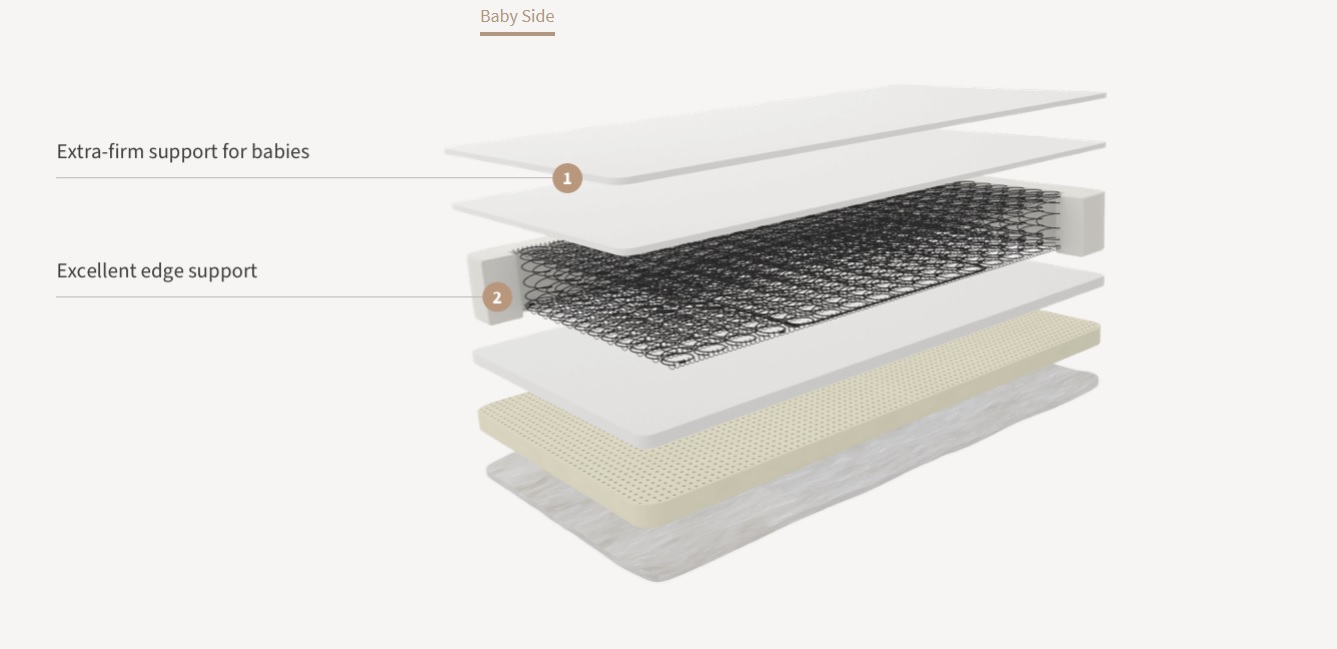
Pros
- Dual-sided
- Doesn’t contain toxins
- Includes washable cover
- Latex foam layer
- Waterproof outer barrier
- Chemical-free flame barrier
Cons
- Toddlers miss this mattress when they move to a larger children’s bed
For Children Ages 3 Years & Older
For children 3 to 12 years of age, we recommend the Saatva Youth Mattress.
These are available in Twin, Twin XL, and Full sizes. They are completely non-toxic, and GOTS standard-certified.
Saatva also includes a 365-night home trial, a lifetime warranty, and free in-room delivery and setup. Free removal is also available for your old mattress and frame as well.
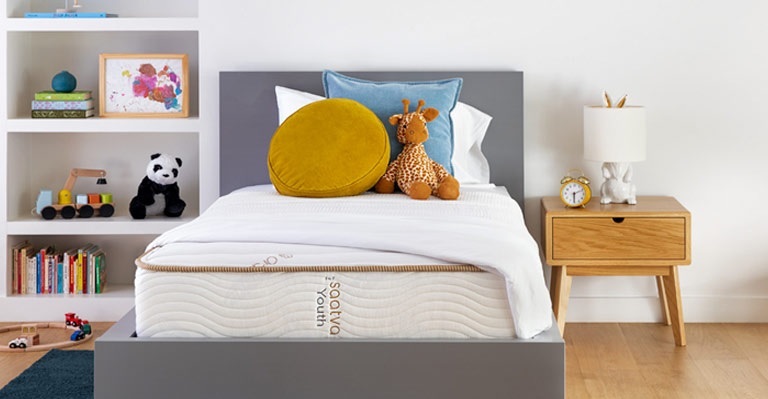
The Saatva youth mattress has a quilted waterproof organic cotton cover. It also has a Guardin™ nontoxic antimicrobial treatment.
The Saatva youth mattress is also dual-sided. One side is for children ages 3 to 7, and the reverse side is for children 8 to 12 years old.
Why two sides?
A child’s body changes significantly from one year to the next. A bed that is just right for a 5-year-old, for example, isn’t the best option for a 10-year-old.
Children in their earlier years require more support. So, the Saatva mattress adapts to your child’s growing body.
The 3 to 7 side has a 5-zone comfort layer, for added support. Whereas the 8 to 12 side has a high-density comfort foam layer for extra cushioning.
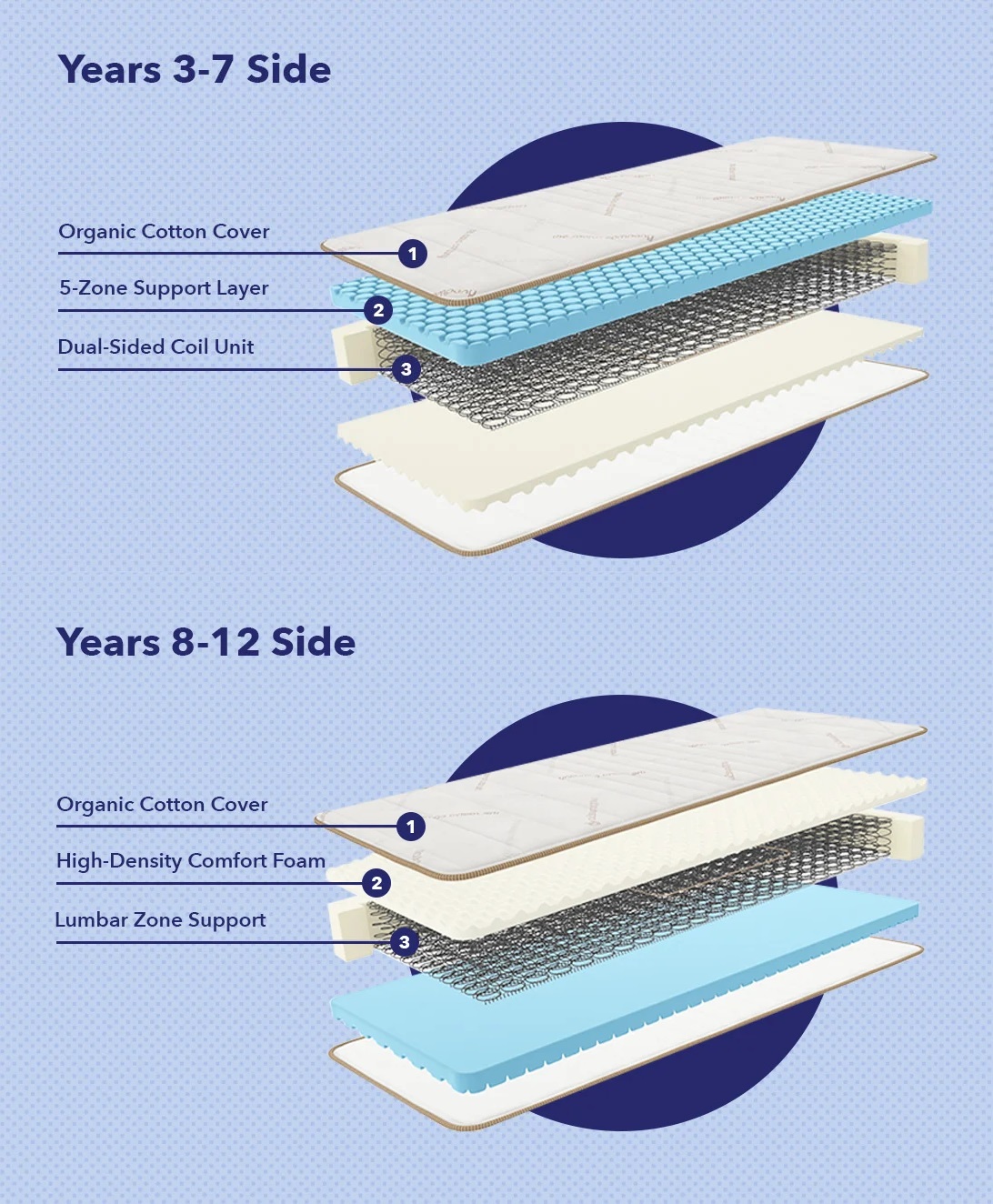
Pros
- Dual-sided
- Latex foam
- Organic cotton cover
- Waterproof barrier
Cons
- More expensive than cheaper alternatives
Selecting an Organic Mattress for Children
When shopping for an organic mattress for children, focus on the materials.
But for a child’s mattress, the material matters.
You’ll find different materials available, but the best options tend to be cotton, latex, or wool.
Organic Cotton
A mattress for children or toddlers, that has organic cotton internal filler and external surfaces is ideal.
Organic cotton is breathable and will ensure that your child is sleeping on a healthy bed. Quilted mattresses are durable, and they maintain their original shape without sagging.
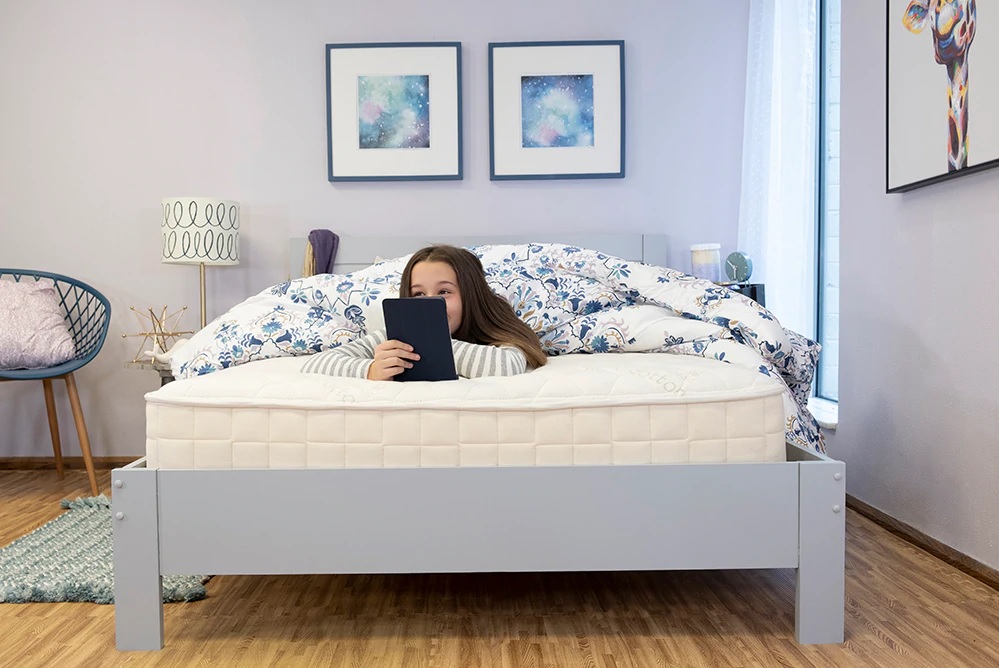
Natural Latex
Latex has become very popular over the past 5-10 years. If you like the idea of memory foam, latex is a very good option.
Latex offers the same level of comfort as memory foam, but it is much more responsive. It also won’t hold on to heat as memory foam does.
When buying a latex mattress, make sure that the latex content is all-natural or organic. And avoid synthetic latex blends.
Choose a latex mattress that is GOLS certified organic.
Wool
Wool or woolen blends are common in organic mattresses. Organic wool is non-toxic and is quite safe to use for a child.
Look for mattresses with a GOTS certification. GOTS-certified mattresses contain organic materials that are certified by the National Organic Program (NOP).
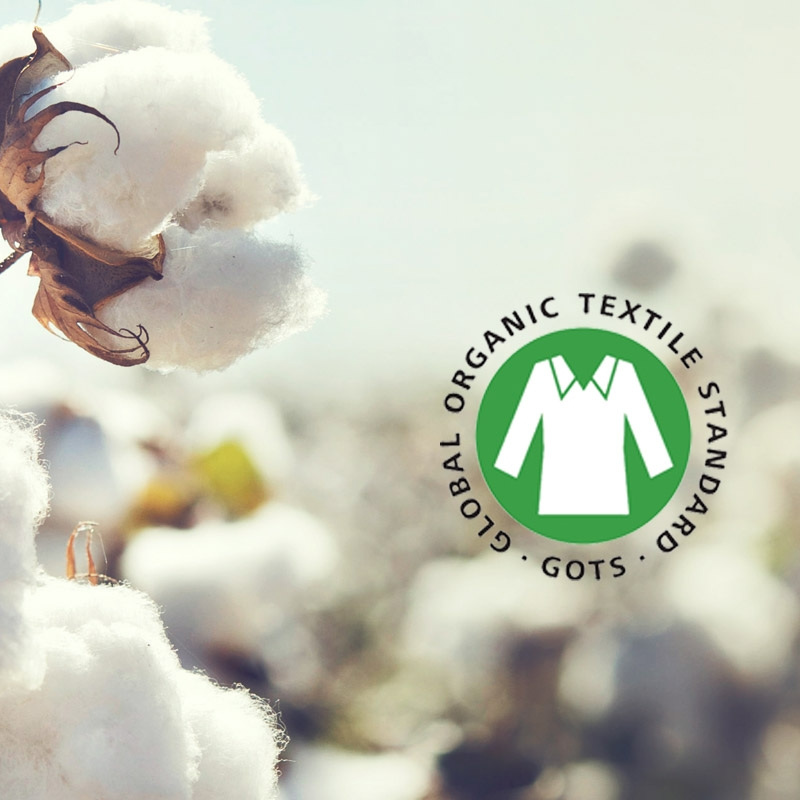
Wool is often used for children’s mattresses because it is naturally flame-resistant.
To ensure fire protection, some companies use wool that is treated with non-toxic natural chemicals. Others use PLA fiber from plant starch, which is fire-resistant. PLA is hypoallergenic as well as non-toxic and can be easily cleaned.
If you’re considering this type of mattress, make sure, of course, that it is GMO-free.
Avoid Bio-Foam, Eco Foam, & Soy Foam Mattresses
You may notice that some products are advertised as eco-friendly, green, or plant-based. They’re often described as Bio-Foam, Eco Foam, or Soy Foam mattresses.
This is often referred to as “green-washing.” These “eco-mattresses” all contain large percentages of toxic chemical substances.
These styles can be dangerous since they often contain polyurethane foam mixed with a small amount (10 to 25%) of plant-based materials.
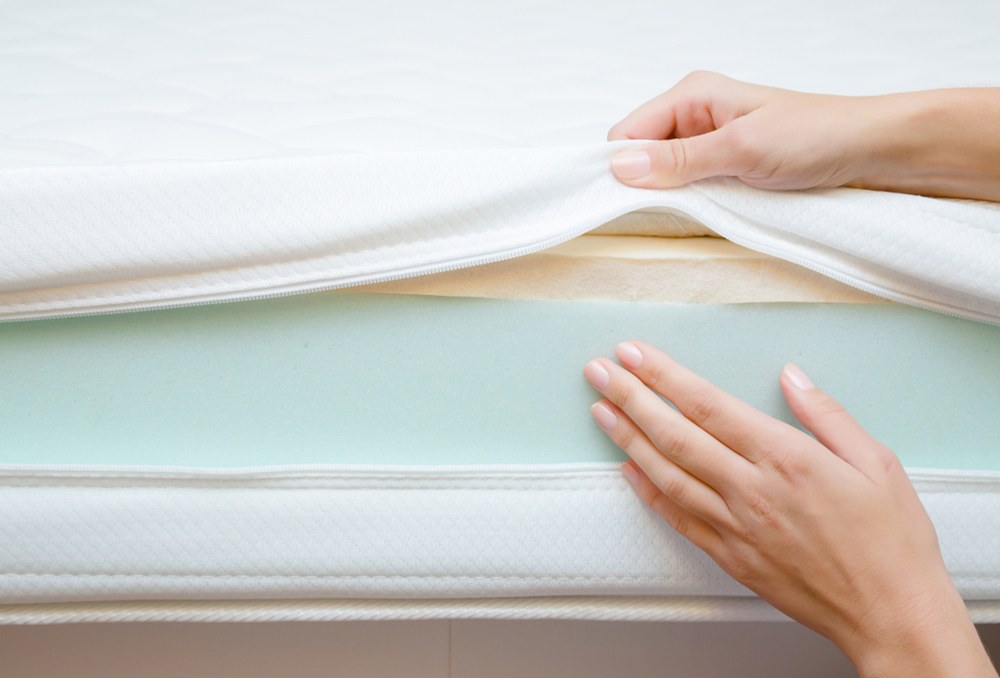
Polyurethane foam requires treatment with fire-resistant chemicals to meet regulations. And these chemicals are unhealthy.
Soy foam is particularly a bad choice. The name would suggest that the foam is made from soybeans. But, soy foam usually only contains about 3-5% of actual soy.
The rest of the foam is made from petrochemicals. If you like a foam mattress, we highly recommend a latex version.
Conclusion
A quality organic mattress is essential for a good night’s sleep for a child.
It’s also important for your child to sleep in a non-toxic environment. Mattresses for kids often contain harsh chemicals that can cause skin and respiratory irritations.
However, you can and should choose an organic mattress. Organic mattresses keep your child healthy and well-rested.
And finally, for a younger child, don’t forget to add a mattress protector!
Kids tend to have nighttime “accidents”. A mattress protector will keep the mattress looking and smelling like new. It will also keep out annoying bed bugs and dust mites.
Whether you have a crib mattress or a Twin/Full, get it covered!
